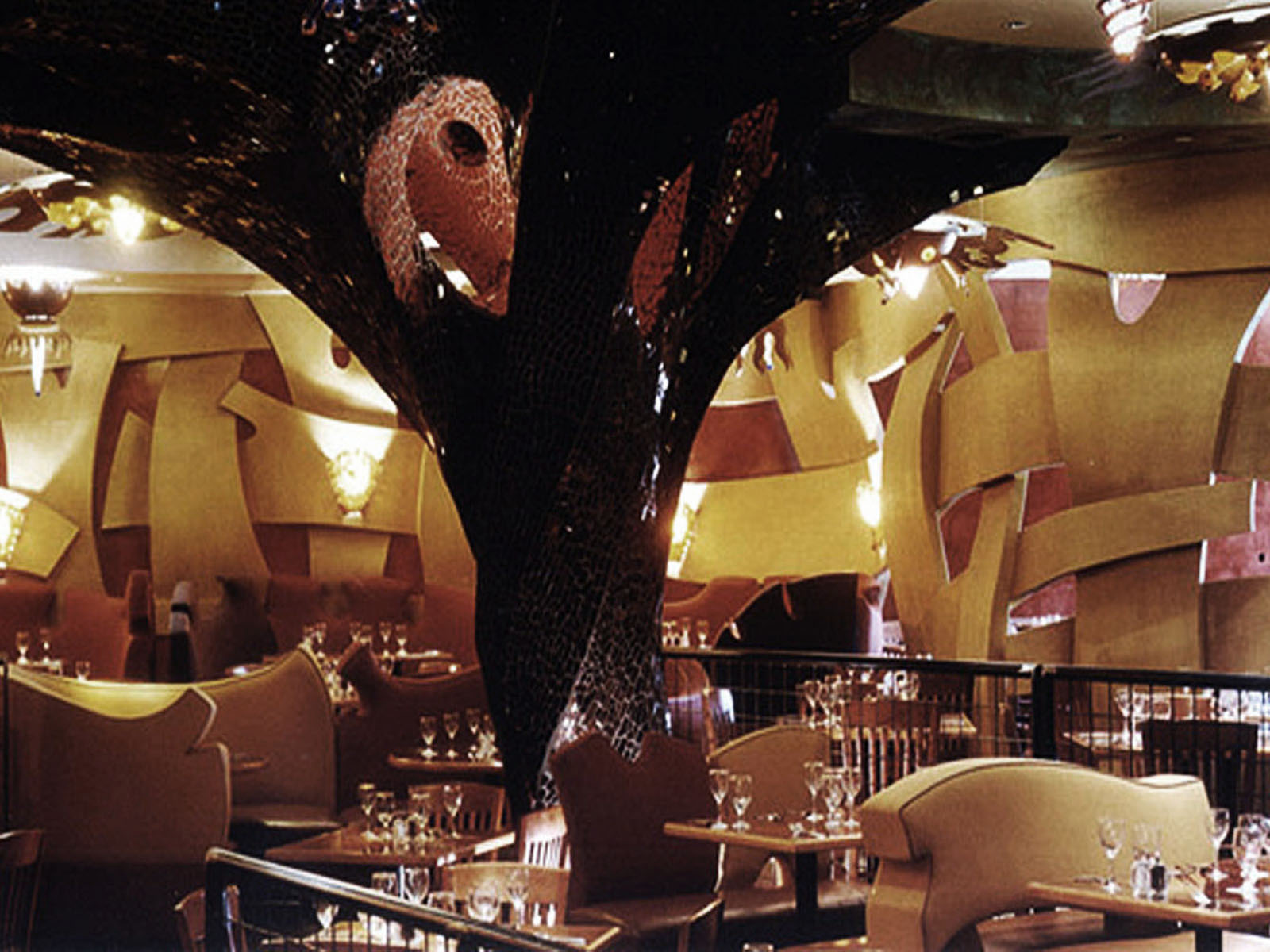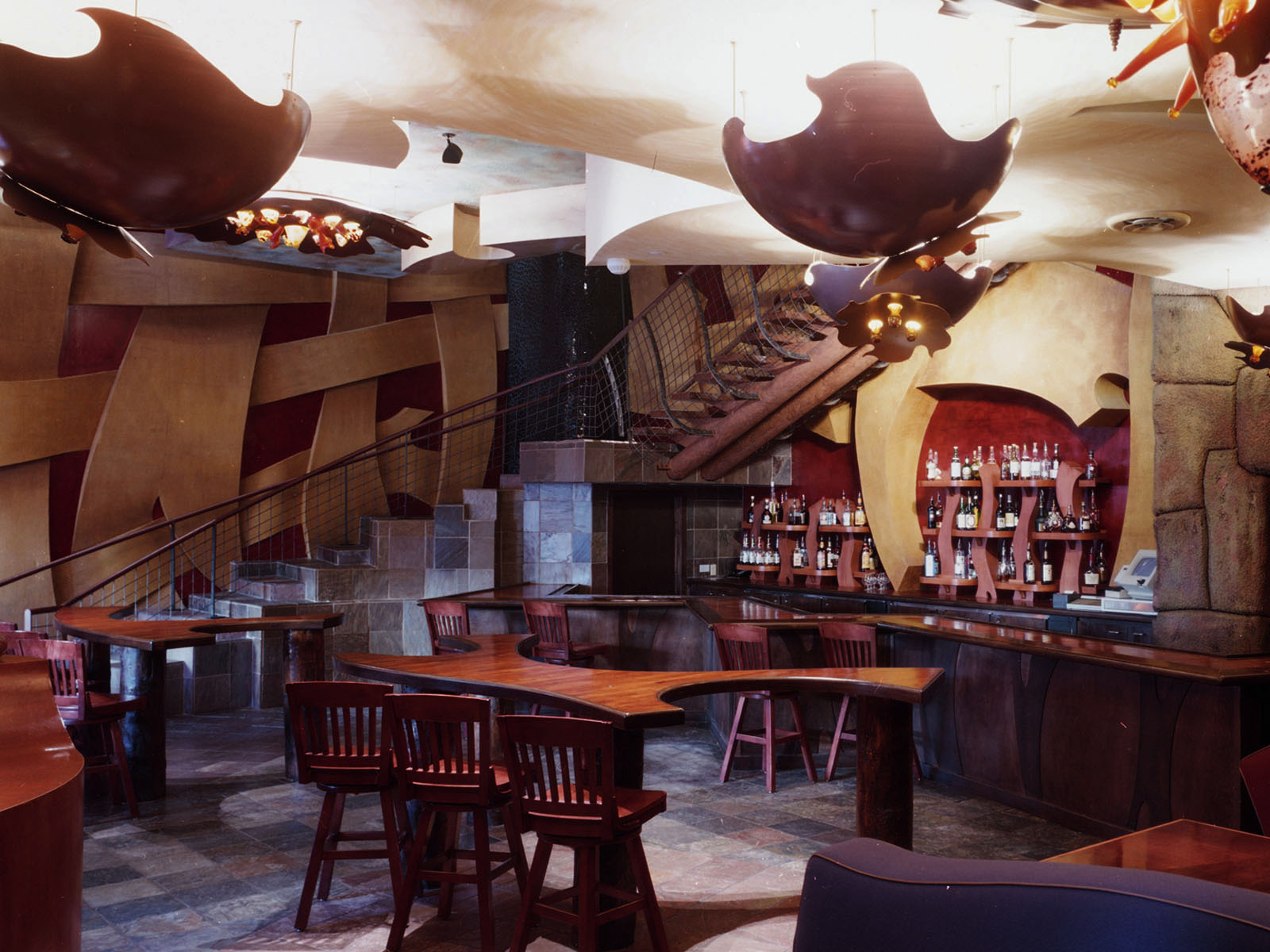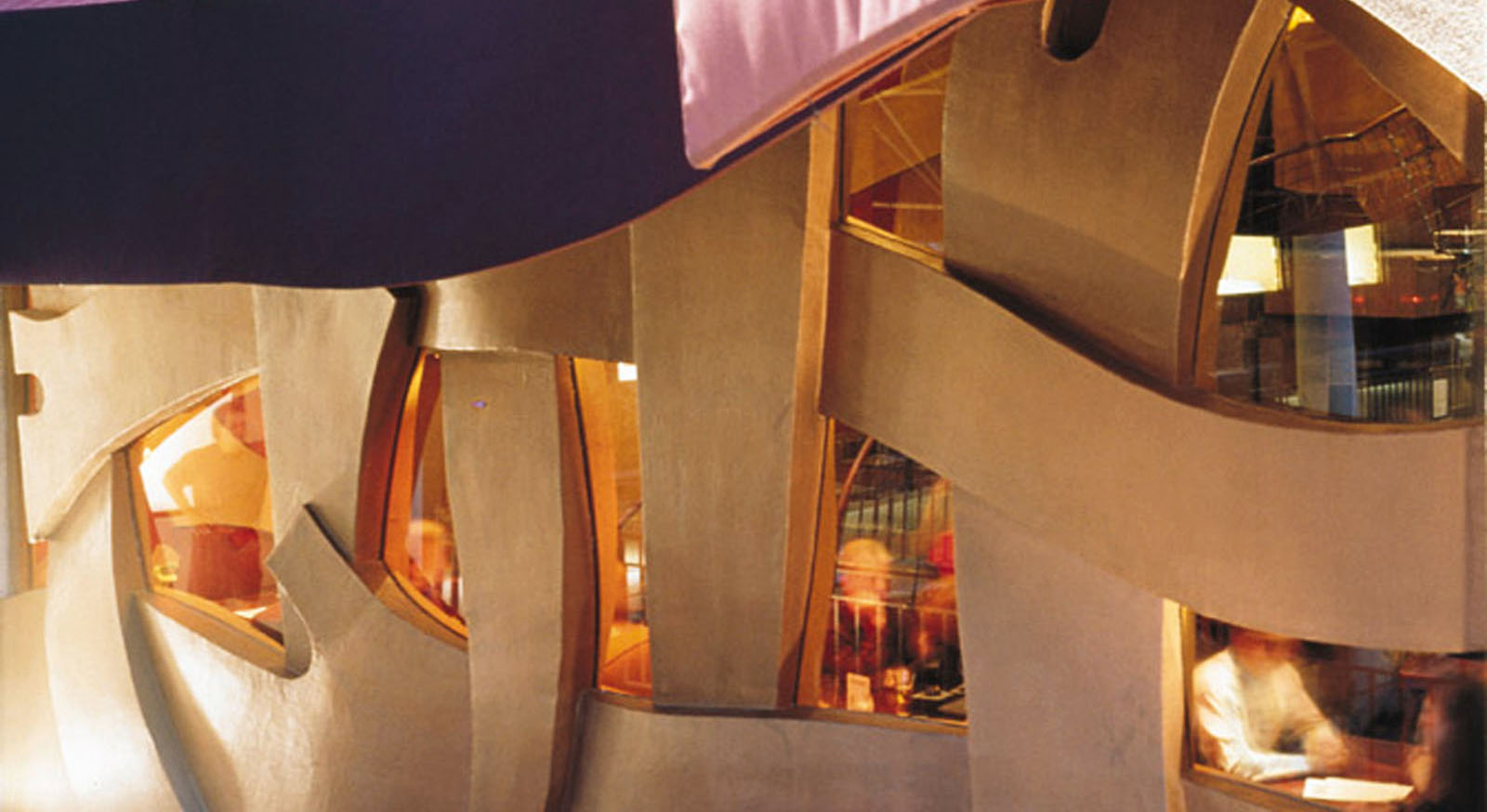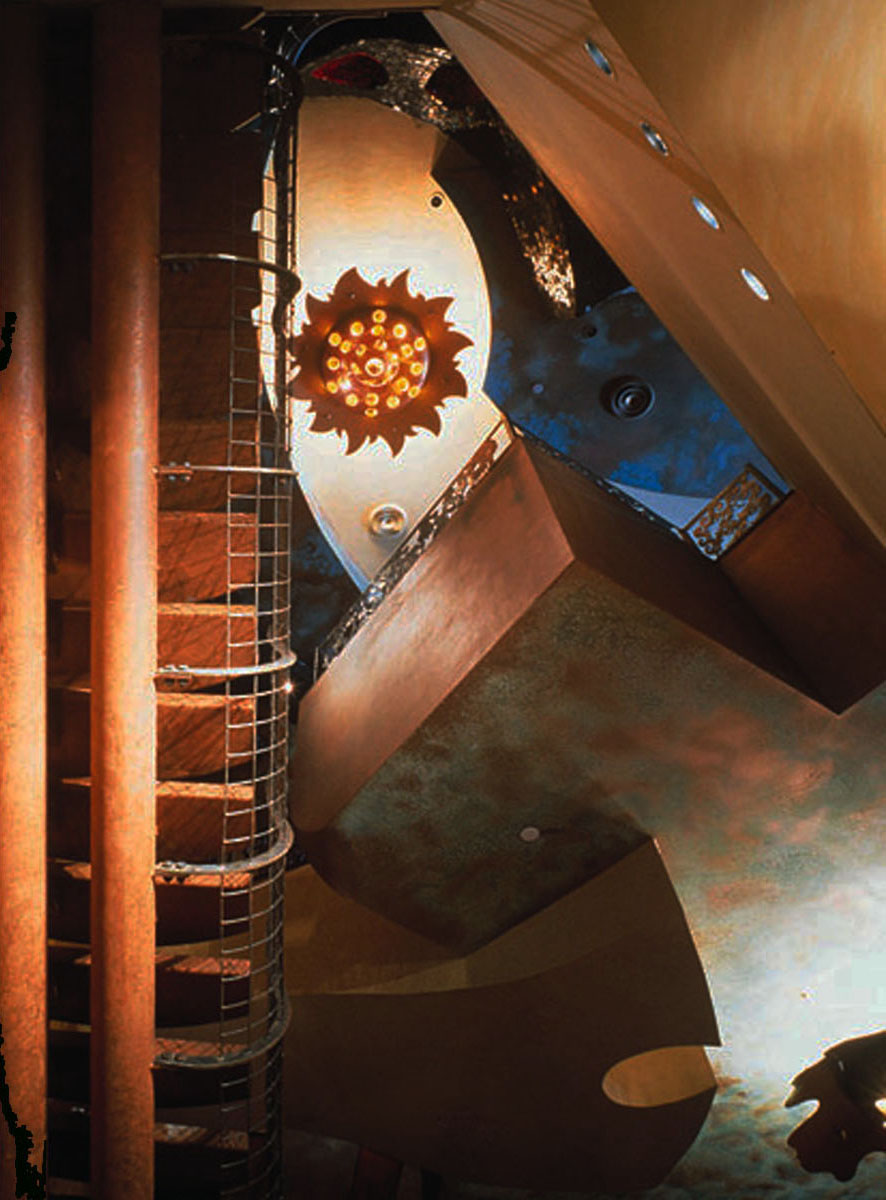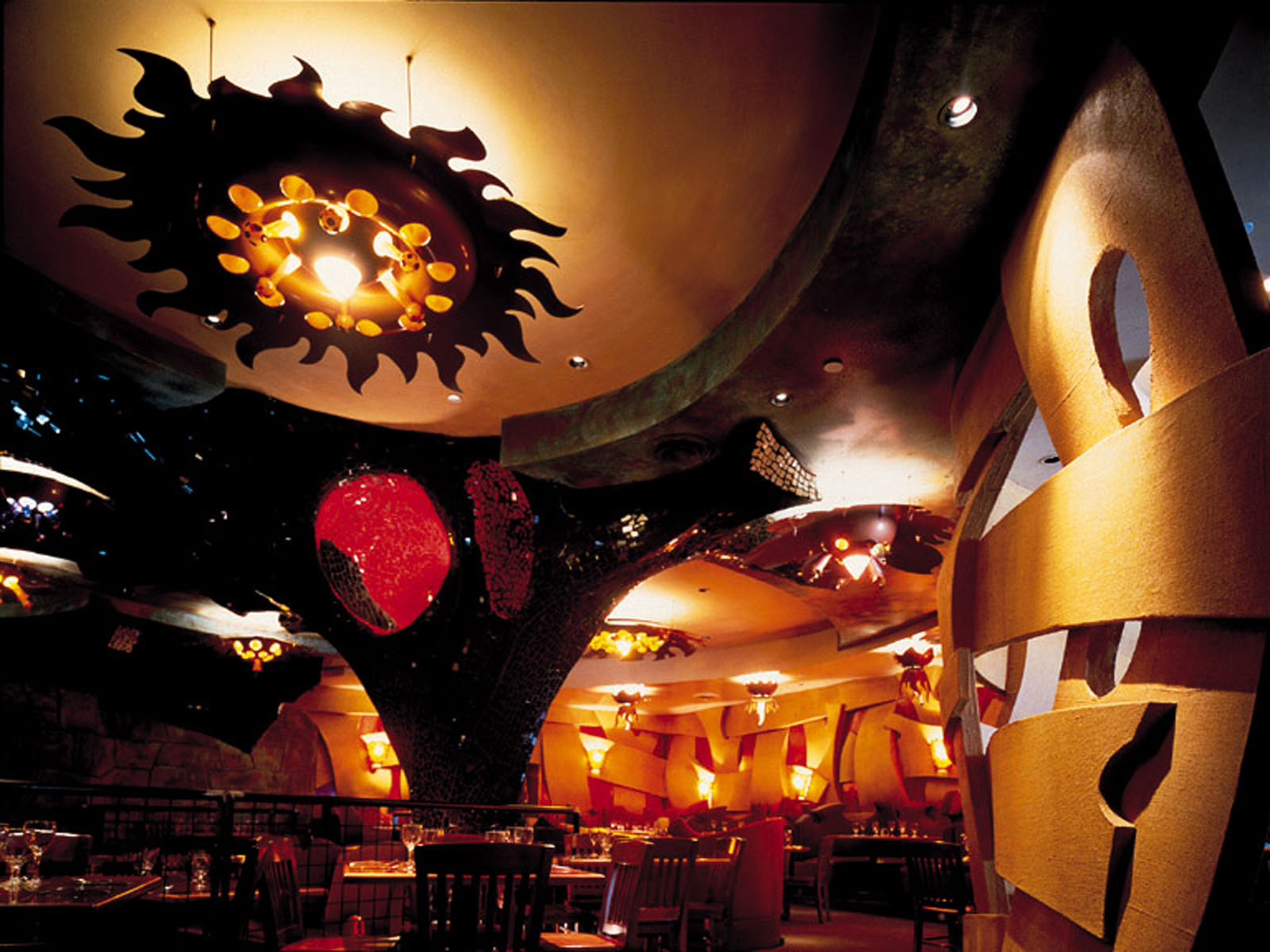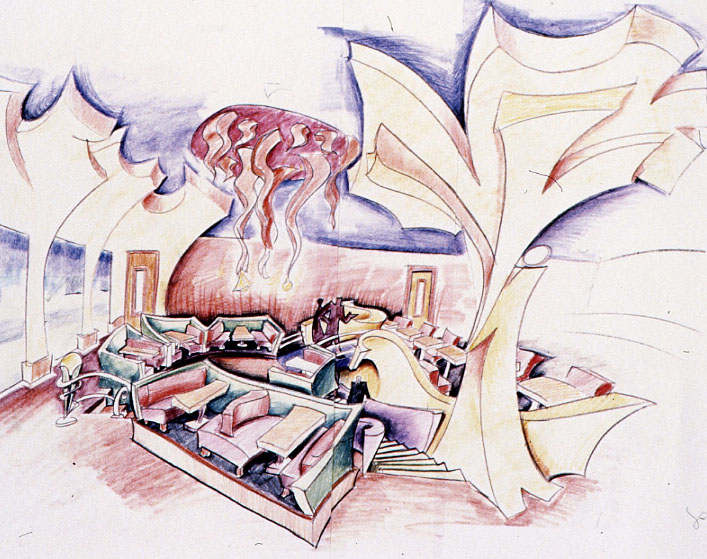Americas Post Oak
Houston, Texas
Magical realist architecture… JMA collaborated with Chef Michael Cordua to create Americas, a theater to present his fusion of pan-South American dishes and European techniques, winning accolades from the James Beard Foundation.
Esquire Magazine’s John Marini named it Restaurant of the Year, commenting, “ It may well start
another revolution in the way we look at American dining.” It was the first of several collaborations
between JMA and Cordua Restaurants exploring the layered cultures of the Americas.
JMA was commissioned by Michael Cordua to design Americas as they were putting the finishing touches on Tempest, a restaurant club in Houston inspired by Shakespeare’s play, and just after
the completion of the Cypress Club in San Francisco, a project pursuing / an inquiry/ scrutinizing / an American architecture consistent with the emerging and vital California food and wine innovations which captured the culinary world’s imagination.
Americas Restaurant Post Oak, Houston opened in early 1993.
JMA was commissioned by Michael Cordua to design Americas as they were putting the finishing touches on Tempest, a restaurant club in Houston inspired by Shakespeare’s play, and just after the completion of the Cypress Club in San Francisco, a project pursuing / an inquiry/ scrutinizing / an American architecture consistent with the emerging and vital California food and wine innovations which captured the culinary world’s imagination.
JMA asked, “what environment would be appropriate to reinforce Cordua’s ultra-contemporary North American interpretations of traditional South American dishes composed with ingredients indigenous to the Americas and fused with European techniques”?
JMA: informed by the groundbreaking South American literary movements created by Jorge Luis Borges and the Magical realist Gabriel Garcia Marquez and studies of South American culture.
We had just completed a collaboration with a San Francisco restaurateur whose menu was built upon the emergent California Freestyle approach to creating cross-culturally influenced dishes composed of seasonal, regional ingredients and paired with local California wines. Traditional San Francisco dishes took on Asian and Mexican inflections, new American food, a challenge to the Nouvelle Cuisine.
Michael Cordua changed our ideas about what “American” meant. He offered up dishes which appeared to be fettuccinibut in fact the noodles were strips of corn tortillas: corn was the grain of the Americas, not wheat, and that the green revolution of the Americas was built upon the success of milpas, agricultural inventions where corn, beans and squash and other foodstuffs were grown together.
We were inspired by the prose of Jorge Luis Borges and the Magical Realism of Nobel prize winner Gabriel Garcia Marquez and images from National Geographic. At Tempest, the architecture was immersive theater. At Americas the architecture became a riff on Magical Realism.
And he pushed us to match his wildly creative and fearless approach to mixing the foodstuffs of the Americas with the techniques of Europe with our design, encouraging us toward poetic abstraction and pushing us to embrace our gringo fantasies about the Americas. We created a terraced room populated by crystalized trees dripping flower chandeliers of spun copper and hand blown glass, booths like leaves, a dining area suspended above a canyon opening, woven walls symbolizing the integration of the indigenous Americans with Europeans and African immigrants.
Credits
Design Architect / Interior Architecture: Jordan Mozer & Associate, Ltd
Lighting Design: Jordan Mozer & Associate, Ltd
Product Manufacturing and Management: Mozer Studios
Artwork: Jordan Mozer & Associate, Ltd
Concept narrative: Jordan Mozer & Associate, Ltd
Photography: David Clifton
SELECTED PRESS
HOUSTON CHRONICLE
…In 1990, Cordúa and Glenn opened their second Churrascos in fashionable Shepherd Square. But national fame eluded them until Américas opened three years later.
At the first annual Robert Mondavi Award of Excellence in 1994, Cordúa was among 13 "rising star chefs." Food & Wine magazine named him one of the 10 best chefs in America. And in 1997, he was nominated by peers for the James Beard Foundation's Best Chef of the Southwest award.
"Michael is definitely one of the pioneers of the Latin cuisine movement, and I don't think he's gotten the recognition that was due to him," says Esquire restaurant critic John Mariani, who named Américas the best restaurant in the country when it opened.
" Michael was the first to focus on Central and South America, and to do it with a splash such as Américas, and food with such finesse and refinement."
The next generation
Cordúa’s greatest culinary achievement remains Américas, where he surveyed ingredients from the New World and served tapas long before they were in vogue.
Américas on Post Oak reminds Cordúa of an Impressionist painting, splashed with color to convey the rich, vibrant heritage of the Americas. A burlap wall, representing a basket, symbolizes how the various cultures have interwoven to create culinary history.
Soon, he says quietly, this beautiful artwork will be gone. Construction on a new Américas on Post Oak nearby — designed, like the original by famed architectural firm Jordan Mozer and Associates, Limited— will start this fall. In the meantime, the original will remain open until its completion.
Cordúa doesn't plan to replicate either América. That's not his style...”
From radio interview transcript:
Michael: Restaurant of the Year. No, not restaurateur. Yeah.
Russ: Restaurant of the Year. You've been in the New York Times, uh, you've been a finalist in the James Beard award.
Michael: Three times.
Russ: Three times now, wow. And so of all of those things, which is the most meaningful to you?
Michael: I would say at the time that Esquire came out with the Restaurant of the Year recognition, because I had stretched out, you know, culinarily and creatively with the restaurant. I mean I had gone across the street from Tony Vallone's Tony's next door to ... and Café Annie's, that's center stage Houston for me, or dining scene, in 1993. And I opened this new concept called Americas that people think is the Jetsons on drugs or the Flintstones and in part not understanding the message in the architecture. You know, so because we're doing something new culinarily and architecturally, to be recognized as the best in the nation, it was a nice pat on the back, you know like, otherwise you'd land flat on your face, you know, in center stage ... in Houston, you know, so..

